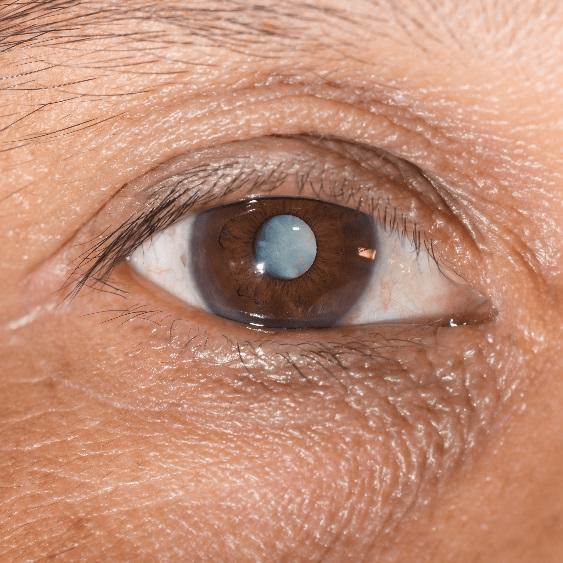See Clearly After Cataracts

When contemplating cataract surgery, you want to know that your cataract surgeon has the skill and experience needed to safely treat the condition and restore clear sight. Look no further than Zambelli Cataract & Laser Eye Institute, where our Beaver County eye surgeons are widely known for several decades for their expertise in cataract care, and for offering the most advanced technologies and options in cataract surgery for 40 years.
What Is a Cataract?
A cataract is a clouding of the eye’s naturally clear lens due to the aging process. Most cataracts develop slowly over the span of many years as the proteins that make up the lens start to clump together. This gives the lens an opaque quality that reduces the sharpness of images reaching the retina.
Cataracts can develop in one or both eyes but do not spread from one eye to the other. They usually start to cause vision problems in a person’s 60s, although they can develop years earlier.

Cataracts can also cause the following symptoms:
- vision that is foggy, dim, or unclear
- glare and/or light sensitivity
- difficulty seeing and driving at night
- bright colors looking faded or yellow
While the majority of cataracts are age-related, cataracts have other causes. Some are congenital and present at birth; others develop due to an eye disease, previous eye surgery or from taking certain medications such as steroids.
Cataract Treatment
Cataracts do not respond to medication. In the early stages of cataracts, a change in vision prescription may help improve symptoms. However, as cataracts become more advanced, they must be surgically removed.
The cataract removal surgery is one of the most commonly performed procedures in the world, and is very safe and short. The goal of cataract surgery is to remove the cataract-diseased, cloudy lens and replace it with an artificial intraocular lens (IOL) to restore clear vision and sharp focus. If both eyes are affected by cataracts, one eye is treated at a time.
During traditional surgery with handheld instruments, a small incision is made near the edge of the cornea (clear covering on the front of the eye) to enter the eye. The capsule that holds the lens is opened with a small circular tear, and small instruments are used to break up the clouded lens. These steps can also be performed with the use of a laser in laser-assisted cataract surgery. Once the pieces of the lens have been removed, the IOL is inserted through the original incisions and carefully positioned. The incisions usually do not need to be stitched closed, as they tend to heal by themselves over time. After surgery, patients quickly resume their normal daily activities.
Initially after cataract surgery, itching and mild discomfort are normal; these side effects should subside within a few days. Special eyedrops should be used for a few weeks after surgery to reduce the risk of infection and other complications. Complete healing takes three to four weeks, although patients recover vision much sooner.
Learn More about Cataract Surgery
If you are experiencing the visual effects of cataracts, please schedule an appointment with our eye doctors to discuss your treatment options.
